How to Render Lard
Learn how to properly render lard and store it in all your baked goods or fried foods to enhance your recipes. You will be blown away by how lard makes everything cook and taste better.
If you aren’t sure what to use this in, try making it in my homemade cannoli recipe or using it as the main fat for frying in my refried beans.
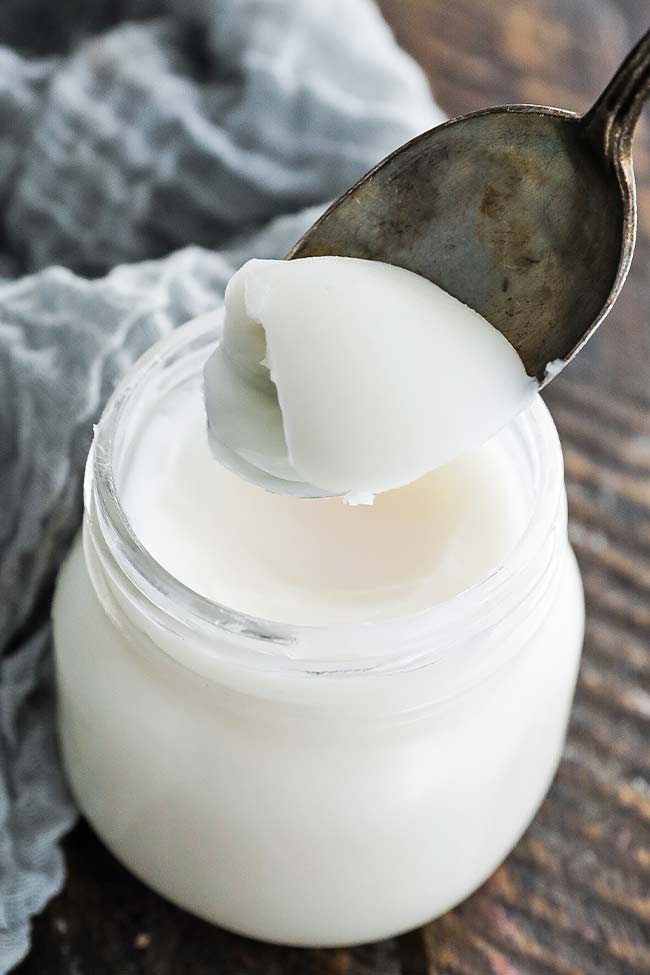
What is Lard?
Lard is rendered and clarified pork fat. The quality of the lard will depend on the area of fat it comes from on the pig and the method of how you render it. When processed, it has a firmer, longer shelf life and has a similar consistency to vegetable shortening. This technique of rendering the lard is a bit of a lost art as so many folks now prefer seed or plant oils.
Lard is very rich, and because of that, it is amazing when used in baking products such as biscuits or pastries. It is a flavorful fat for frying food and is still commonly used in many countries worldwide. Lard can be a healthier alternative to many seed oils and is worth the required making time. This lard can and should be used anywhere on my site where it says rendered bacon fat.
Leaf Lard
Leaf lard is one of the 3 common fats used and is the best fat to use on a pig. It comes from the soft visceral fat around the animal’s kidneys. The flavor of it is very mild, and it will literally melt away in liquid fat as you slow-cook it. Another good source of fat for rendering is pork belly, which I used a lot for this recipe. You can also use fatback, but the result will have a much stronger pork flavor.
Ingredients and Substitutions
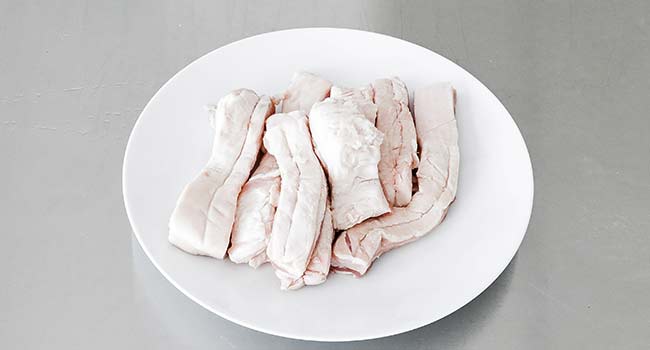
- Fat – I used a combination of leaf fat and pork belly for my recipe. You can use one or the other when rendering lard.
How to Make Lard
Start by trimming any meat away from the fat and cut the fat into smaller ½” or small cubes. It’s ok if there is minimal meat on the fat when cooking.
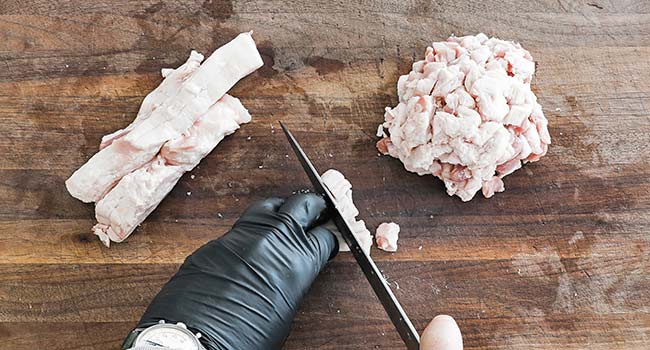
Add the fat to a medium-sized Dutch oven or pot over low heat and begin to render.
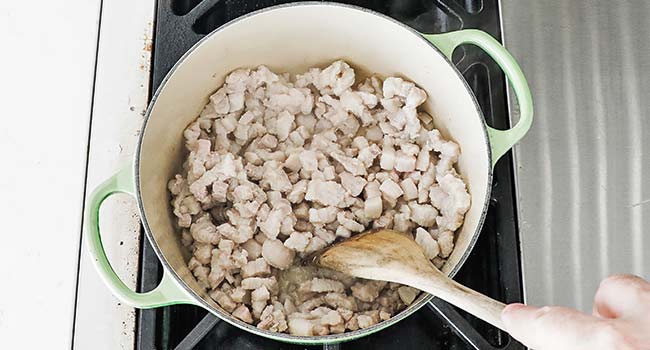
Stir the fat every few minutes to get it going and ensure it does not stick. We aren’t looking to brown it in the beginning.
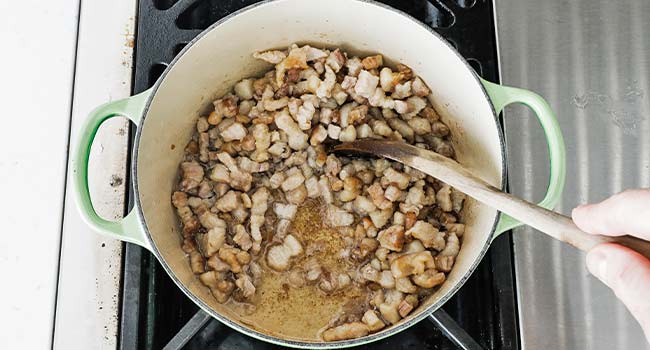
Cover the pot and cook over low heat for as little as 1 hour or up to 4 hours. Come back every 30 minutes and stir it to ensure it isn’t browning too fast or sticking. The heat should never be to a point where the oil is smoking like it does when you are ready to sauté food.
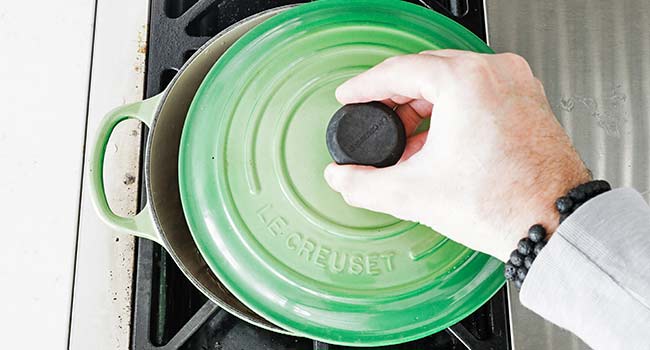
It should be well browned and covered in its fat when it is done cooking. You will know when it’s done because the liquid will not increase. Also, be sure not to cook it too long where the bacon begins to burn.
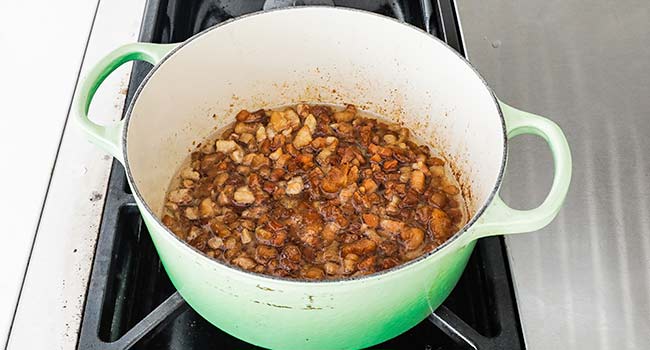
Drain the pork lard through a chinois or cheesecloth.
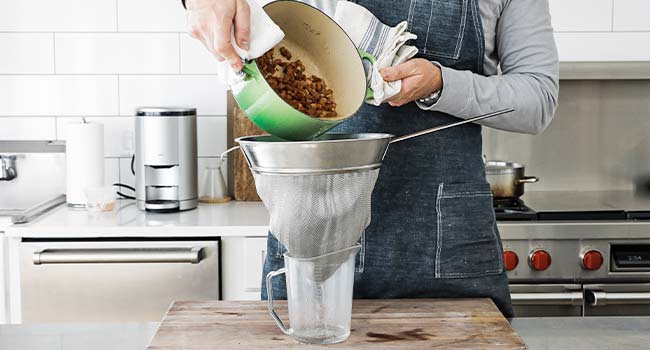
Presse down on the lard to release as much fat as possible.
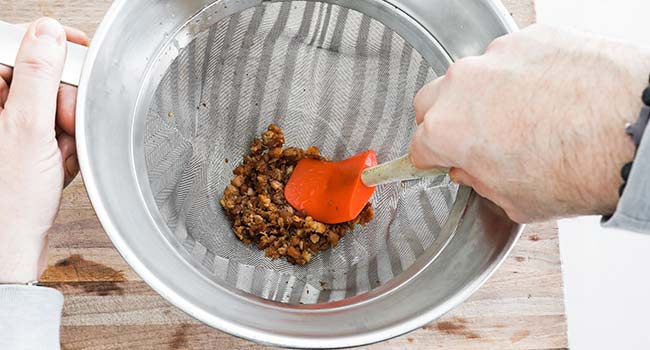
These cracklings can be used in bread, biscuits, or frying with vegetables for added flavor.
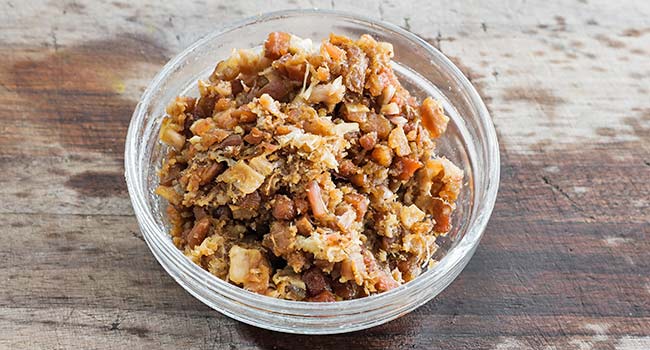
You should end with over 1 cup of rendered lard from 1 ½ to 2 pounds of raw fat. Cover and use or store.
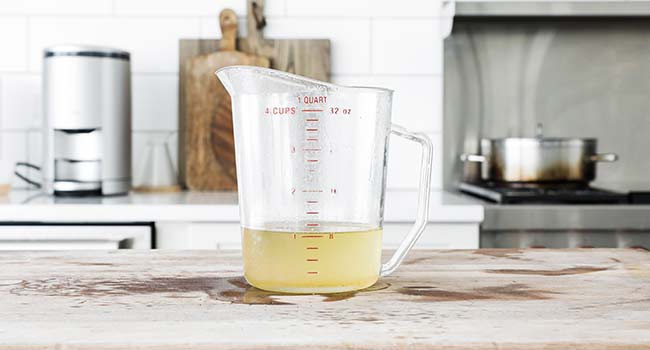
Make-Ahead and Storage
Make-Ahead: You can make this up to several weeks ahead of time.
How to Store: Cover and keep this in the refrigerator for up to 6 weeks. You can freeze this pork lard for up to 1 year.

Chef Notes & Tips
- I mostly store the lard in the freezer and take it out as I need it, usually by the spoonful.
What to Use It In

How to Render Lard
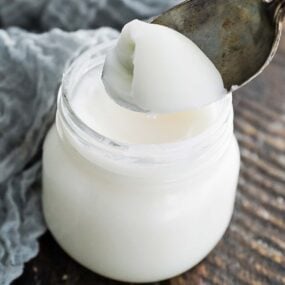
Ingredients
- 1 ½ to 2 pounds of trimmed pork fat
Instructions
- Start by trimming any meat away from the fat and cut the fat into smaller ½” or small cubes. It’s ok if there is minimal meat on the fat when cooking.
- Add the fat to a medium sized Dutch oven or pot over low heat and begin to render.
- Stir the fat every few minutes to get it going and to make sure that it does not stick. We aren’t looking to brown it in the beginning.
- Cover the pot and cook over low heat for as little as 1 hour or up to 4 hours.
- Come back every 30 minutes or so and give it stir to make sure it isn’t browning to fast or sticking. The heat should never be to a point where the oil is smoking like it does when you are ready to sauté food.
- It should be well browned and covered in its own fat when it is done cooking. You will know when it’s done because the liquid will not increase. Also be sure to not cook it too long where the bacon begins to burn.
- Drain the pork lard through a chinois or cheesecloth.
- Presse down on the lard to release as much fat as possible.
- You should end with a little over 1 cup of rendered lard from 1 ½ to 2 pounds of raw fat.
- These cracklings can be used in bread, biscuits, or frying with vegetables for added flavor.
- Cover and use or store.


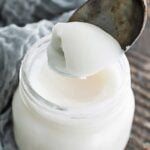
Would like to try making this. I go to the grocery store. What do I ask to buy, exactly? Two pounds of_________? In order to do this I don’t want to sound like I don’t know what I’m asking for at the meat counter. Thanks
leaf lard
I go to the grocery store. What do I ask to buy, exactly? Two pounds of_________? In order to do this I don’t want to sound like I don’t know what I’m asking for at the meat counter. Thanks
leaf lard